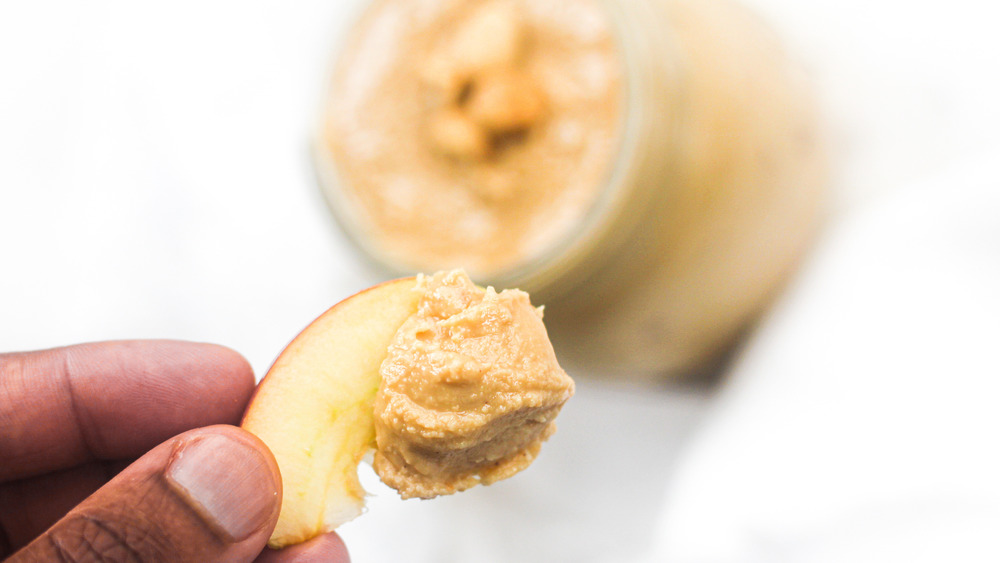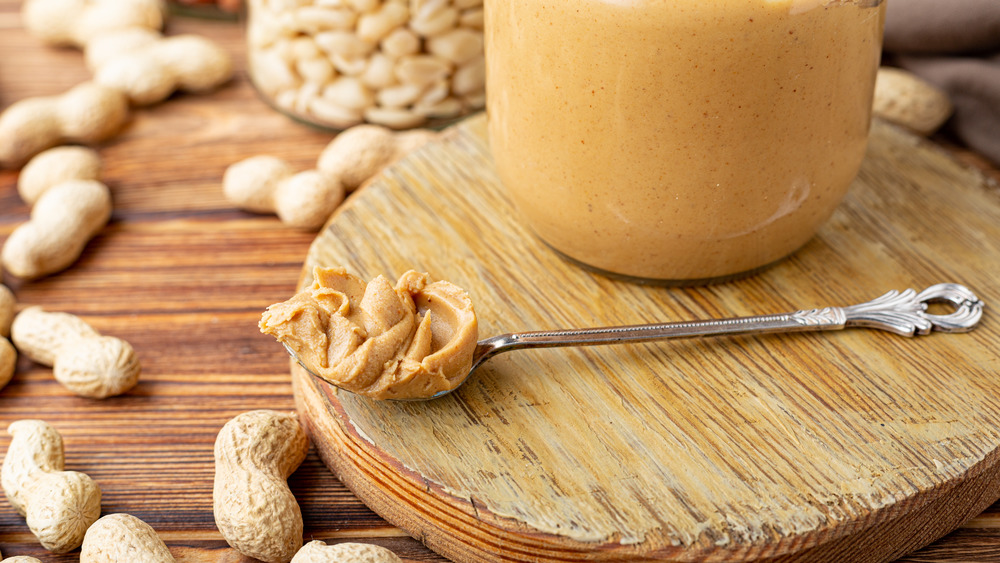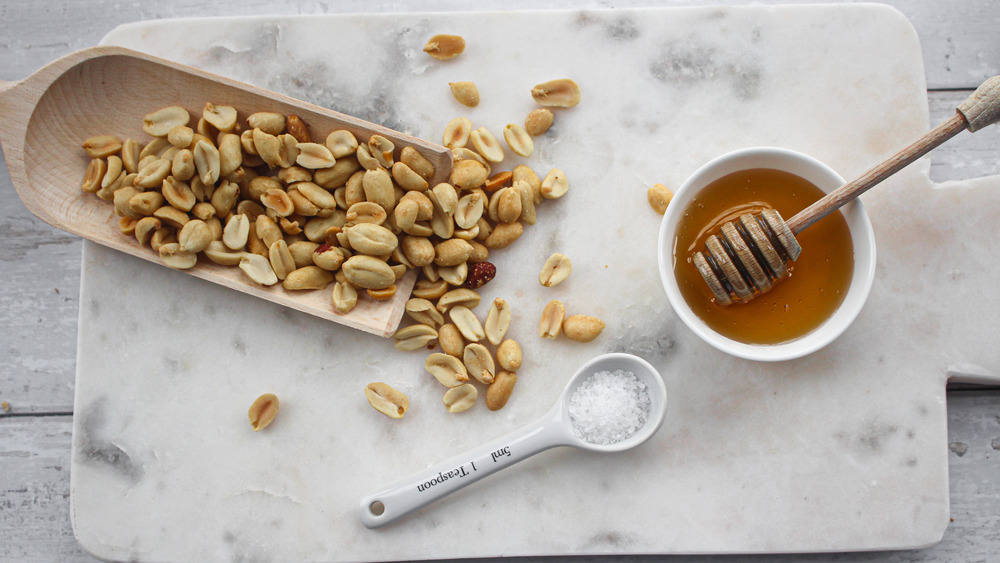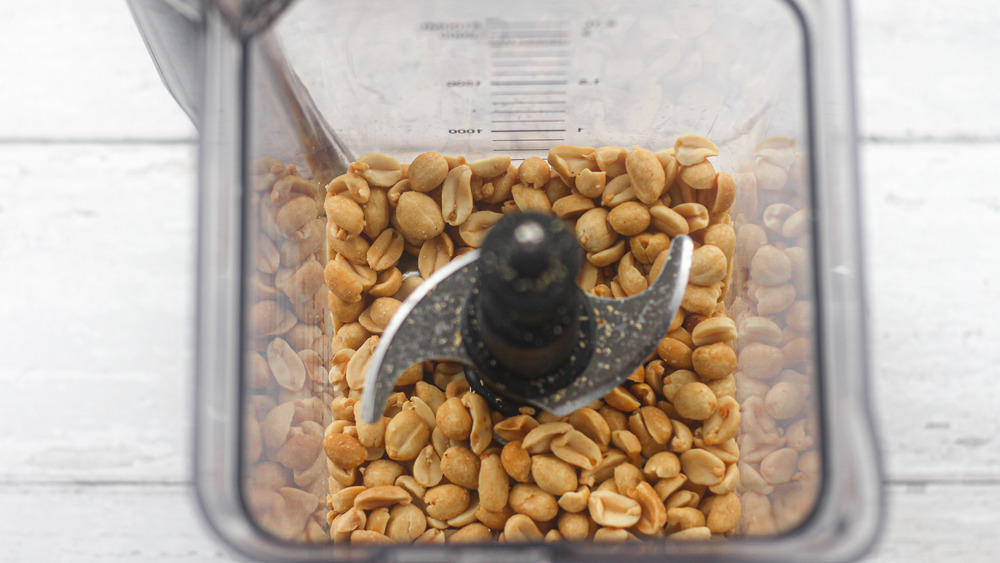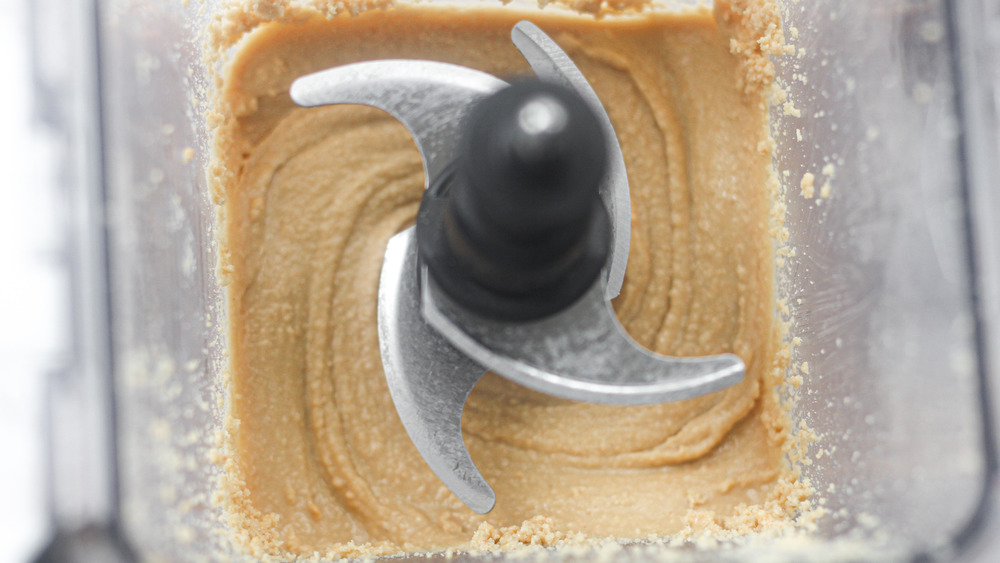Peanut Butter Recipe
If you think peanut butter is only good for sandwiches, then chef and recipe developer Susan Olayinka of The Flexible Fridge wants you to think again. "It also pairs well with apples, dark chocolate, smoothies, chocolate peanut butter cups, and even in savory dishes like satay sauce," she says. And of course, a peanut butter and jelly or simply a peanut butter sandwich is always great, too.
Peanut butter is a staple ingredient in many types of cuisine and can be the X-factor in quite a few dishes. Making a chocolate cake? Consider adding a peanut butter drizzle atop as the icing. Making banana bread? Add a few teaspoons of peanut butter to the batter for a rich, complex flavor. Serving rice? Try a soy and peanut butter sauce, and add some spicy sriracha while you're at it to take your taste buds up to an 11. There are myriad ways to use peanut butter.
And because peanut butter is a relatively shelf-stable food, it's something you can always have on hand, even when it was made with your own two hands (and a food processor). There is a good food storage rule to remember, though. "It is best to store the nut butter in a cold, dry place," says Olayinka. "Opened peanut butter has a shelf life of about 2 to 3 months."
As for how long it takes to make peanut butter, don't sweat it. You'll spend more time reading this recipe than you will be following it.
Who first created peanut butter?
George Washington Carver, the American scientist and inventor who famously developed more than 300 uses for the legume, deserves close association with peanuts. However, contrary to common misconception, he did not invent peanut butter. In fact, according to the National Peanut Board, both the ancient Inca and Aztec civilizations consumed peanut butter in various forms. Modern peanut butter can be traced to three men all working independently of one another: Canadian Marcellus Edson, who created a peanut paste in 1884, American John Harvey Kellogg (yes, of Kellogg's cereal) who developed a raw peanut butter in 1895, and American Ambrose Straub, who created a machine to make peanut butter in 1903, according to the Huffington Post.
You, however, won't need a patent or even any especially unusual ingredients to make this stuff. Here's how you can create your very own peanut butter in your home kitchen.
Gather your ingredients for peanut butter
Surprise, surprise, the star ingredient of peanut butter is... peanuts. But not just any peanuts, says Olayinka. "Do not get salted peanuts, so you can control the salt limit to your liking," she advises. And that goes for honey roasted or otherwise flavored, too. Doing so could result in an unpleasant flavor surprise for your peanut butter, so keep it simple at least the first time you make it.
All you'll need to make your own superb peanut butter is 3 cups of roasted, unsalted peanuts, 3 teaspoons of honey, and 1/4 teaspoon of salt. By keeping the recipe basic like this, you create a peanut butter that blends well with other flavors and one that is more shelf-stable, too, since honey and un-iodized salt pretty much never expire.
Blend and scrape to make peanut butter
Making homemade peanut butter is basically a repetition of the same two steps a few times over, though it's plenty easy to keep doing so in the pursuit of peanut butter. Start by putting the peanuts into your high-speed blender and blending them on high until all the peanuts turn into a mix with a sand-like texture. This will take only a couple of seconds. Next, use a spatula to scrape down the sides of the blender, getting all the bits back down at the bottom of the blender so they can be properly mixed.
Now blend on high for a couple more seconds, then scrape down the sides again. Blend on high for a few seconds yet again. By now, the peanuts should "start to turn into a thick paste," says Olayinka. Blend on high again for a couple of seconds. You'll see that the mixture will start to loosen into a texture more akin to finished peanut butter. That was four blending sessions, if you're keeping score, though don't pack away that blender just yet.
Add the salt and honey and blend your peanut butter again
Once you have completed those four rounds of blending, open the blender and sprinkle in the sea salt and then spoon in the honey. Now blend everything together for a few more seconds, and... you're done! The peanut butter is now ready to consume in about a million different ways. But to start, maybe try a spoonful enjoyed simply as it is.
And for the record, "a few seconds" really does mean just a few seconds. Olayinka says: "Do not over process [as] the peanuts will start to get hot and bake." You're not looking to do any actual cooking here, so just remember to practice a little bit of restraint and stop blending before it goes too far.
Peanut Butter
Peanut butter is a staple ingredient in many types of cuisine and can be utterly delicious on its own. Why not learn how to make your own peanut butter at home?
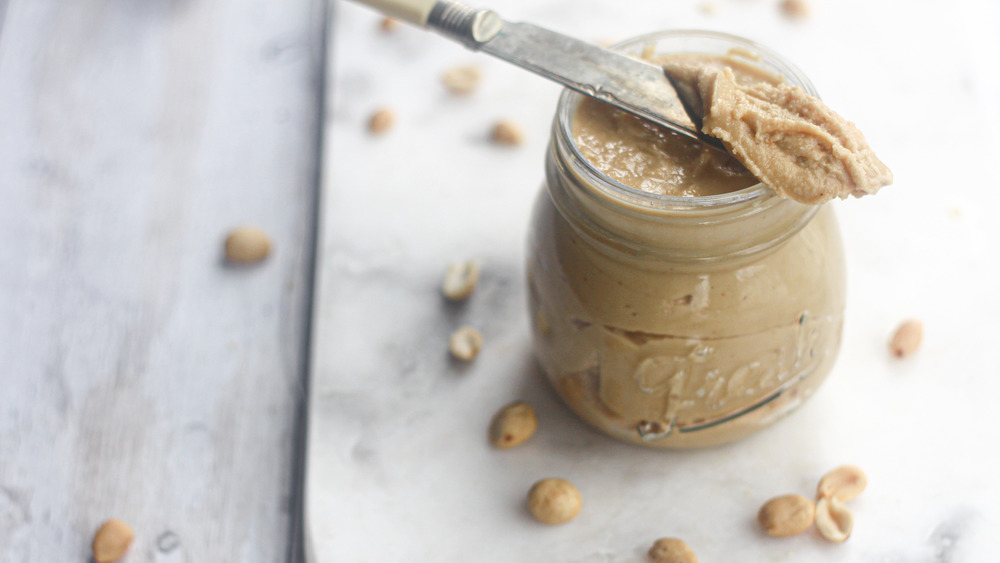
Ingredients
- 3 cups of roasted unsalted peanuts
- 3 teaspoons honey
- 1/4 teaspoon sea salt
Directions
- Put peanuts into your high-speed blender.
- Blend on high until all the peanuts turn into a mixture with a sand-like texture. This will take a couple of seconds.
- Scrape down the sides.
- Blend on high for a couple of seconds, then scrape down the sides.
- Blend on high for a couple of seconds more, then scrape down the sides. By now, the mixture will start to turn into a thick paste.
- Blend on high again for a couple of seconds. The mixture will start to loosen.
- Sprinkle in sea salt and spoon in honey.
- Blend for a couple of seconds. It is now ready to enjoy! Do not over-blend, as this may cause the peanut butter to get hot and cook.
Nutrition
| Calories per Serving | 318 |
| Total Fat | 27.0 g |
| Saturated Fat | 3.4 g |
| Trans Fat | 0.0 |
| Cholesterol | 0.0 mg |
| Total Carbohydrates | 11.0 g |
| Dietary Fiber | 4.7 g |
| Total Sugars | 4.8 g |
| Sodium | 68.8 mg |
| Protein | 14.1 g |
